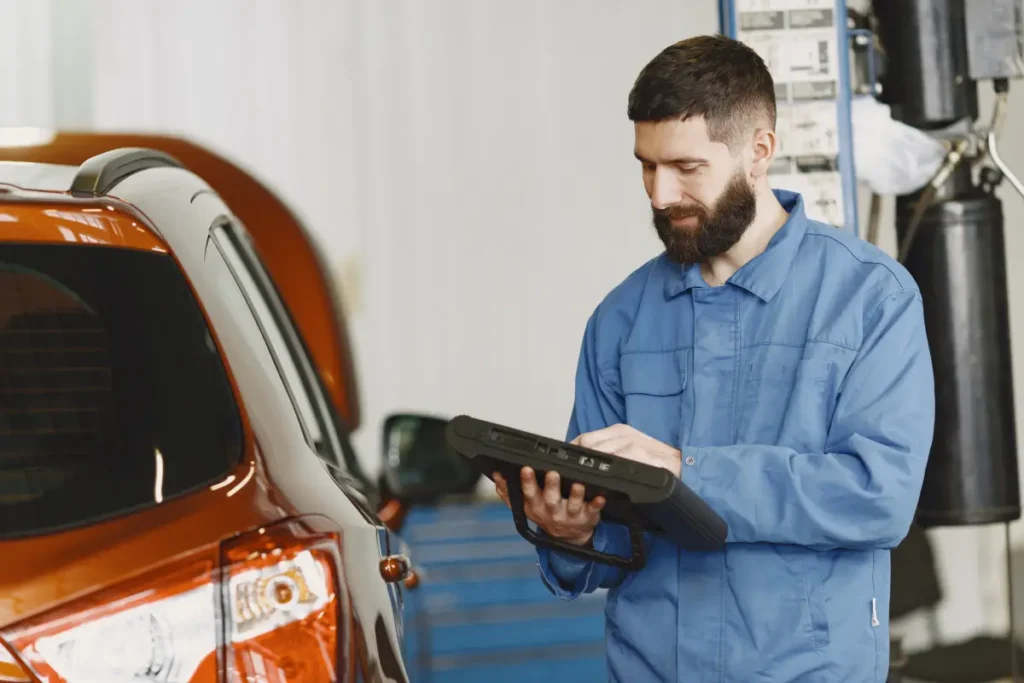Table of Contents
Introduction to Vehicle Safety and Performance Testing
Safety and performance testing may be well conceived of as pivotal factors for the general viability of automobiles in use today which typify the auto industry. These tests serve a dual purpose: they continue to check that vehicles conform to the required legal requirements as well as pass a guarantee to consumers about the safety and reliability of the vehicles they operate in. Given that modern cars are full of advanced technologies and features, the role of testing rises in proportion to vehicle complexity.
This has led to the development of numerous assessment procedures that take into consideration different parts and factors within the automobile including the extent of crashworthiness, braking friction, exhaust fumes, and overall operating ability. Modern testing equipment like the DEKRA VT1000 has brought a new vane to these types of tests away from the traditional approach. The DEKRA VT1000 is a new-generation DV that offers a platform for influencing real-life situations and aids in the assessment of vehicle systems in different threatening conditions.
However, compliance with safety regulations is of high importance to automotive industries. Various government agencies and legal organizations recommend certain standards that a manufacturer has to fulfill before introducing a vehicle to the public. The testing process is not only effective in ensuring compliance but it also helps in reassuring the consumer since there is always the assurance that the car producer has tested the car and found out that it meets the required standards. This creates a market climate to support quality automobiles and allows the producer to compete through the quality and safety of their products.

The market dynamics of the automotive sector thus mean that testing technologies like DEKRA VT1000 become even more relevant over time. By the use of better methods and tools, the manufacturers can therefore be very certain that they are compliant with legislation rules as well as being sure that they are conforming to clients’ expectations with safer and more effective products. This section stresses the basics of vehicle safety and performance testing before delving into further advancements in testing technologies beneficial to these two core processes.
Key Features of the DEKRA VT1000
Advanced Vehicle Testing
The DEKRA VT1000 is a highly functional equipment that has many elaborate functions that place it among the best equipment used globally in vehicle safety and performance testing. At the core of these capabilities is the integration process of advanced testing approaches that enable the evaluation of vehicles to the fullest. In addition, the VT1000 features a host of innovative tools acquired to conduct a series of tests, which adhere to safe standards and increase the reliability of vehicle performance tests.
Automated Testing Efficiency
Another feature that may be mentioned along with the strong points of the DEKRA VT1000 is the highly automated process of testing. By minimizing the number of manual interventions the VT1000 increases the speed, reduces the likelihood of errors, and brings about an overall saving on time tested. Using this feature technicians can perform different tests and increase the number of vehicles that undergo the tests. This is especially helpful in environments where testing cycles have to be fast, this is due to high demand.
Easy System Migration
Integration capabilities are the other critical feature of the DEKRA VT1000. Its goal is to integrate into other testing frameworks so that migration toward using this system appears efficient. It means that organizations can develop a new compatible system that improves current organizational operations without a major overhaul. The DEKRA VT1000 being highly versatile, is designed to operate with several automotive technology platforms.
Ergonomic Testing Efficiency
In addition, the ergonomic structure of the DEKRA VT1000 has been argued to hold a lot of significance to the technicians due to its user interface. It is user-friendly and can be administered by anyone, including the operators who can go through the various testing parameters without professional help. Better usability always translates into better productivity and means less time will be spent on learning how to use the application rather than on actual testing.
In conclusion, the DEKRA VT1000 provides a mixture of driving automation that links into sophisticated testing technologies and an interface design that is user friendly all of which set it at the core of current techniques used in the automotive industry for testing vehicles’ safety and performance characteristics.
Impact on Vehicle Testing Standards and Practices
Next-Level Testing Accuracy
The integration of the DEKRA VT1000 in the field of vehicle testing puts the market at a new level and standard. This advanced testing system proposed in this project is aimed at increasing the number and accuracy of assessments made on vehicles. Unlike other testing methodologies, the DEKRA VT1000 utilizes modern technology and a high algorithm that offers extremely short periods of testing and allows for quicker decisions without compromising the accuracy of the results.
Reliable Data for Manufacturers
Another advantage of the DEKRA VT1000 is its capacity to guarantee that any results are repeatable. In the case of vehicle testing, there is a need to be consistent as much as possible. Certain testing procedures are adapted by the VT1000 to reduce variability as experienced in manual testing processes, so more confidence is placed on the results obtained. Therefore, manufacturers can be sure that these conclusions will allow for improvement in the designs of vehicles and satisfy existing standards.
Advanced Safety Data Insights
In addition, the more comprehensive safety data based on the DEKRA VT1000 potentiates the general vehicle testing systems. The platform offers performance data and analysis and feedback on its various parameters, data that is important for analyzing the vehicle performance under given circumstances. Advanced safety data serves not just the manufacturers to minimize risks and improve vehicle safety but also the agencies that promulgate and seek to maintain high levels of vehicle safety in the production industry.
Better Regulations
Concerning conformity with the industry norms, such a device can impact the regulatory requirements by presenting objective evidence of the performance of a vehicle. While the platform demonstrates the potential for creating top-quality data, it may lead to the emergence of new standards, which are specific to the regulator’s capabilities of the state-of-art technology. In total, the DEKRA VT1000 is not just a device that helps to test; it is a brand-new approach to vehicle safety and performance evaluation, which creates new standards within the automobile market.
Conclusion
The DEKRA VT1000 has become more of a revolution in the vehicle safety and performance testing industry. Thanks to providing more sophisticated features, this progressive testing solution has contributed to improving vehicle evaluations for manufacturers and safety agencies while providing consumers with greater levels of safety. Enabling more accurate measurements and diagnostics, the DEKRA VT1000 has raised the value of performance assessments and enhanced their validity concerning different sorts of vehicles. This progress is as advantageous for manufacturers as it is due to the assistance in meeting stringent safety standards while also being helpful for consumers who trust automotive safety features.






